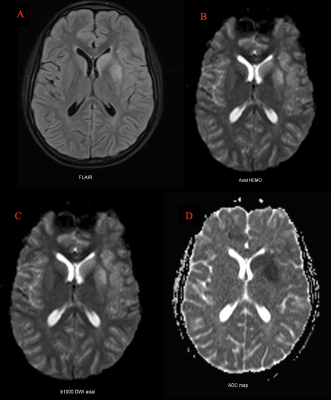ISMRT Oral
Winning Clinical Oral Presentations
ISMRM & ISMRT Annual Meeting & Exhibition • 04-09 May 2024 • Singapore

| 08:15 |
5190. |
Combining 7T and 3T MRI in Epilepsy Diagnosis: A Collaborative
Approach to Enhance Surgical Decision-Making
Vi Phan1,2,
Krista R Runge1,
Steve H Fung3,
Brandy B Ma4,
and Amit Verma4
1Translational Imaging Center, Houston Methodist Hospital, Houston, TX, United States, 2MRI Core Laboratory, Houston Methodist Hospital, Houston, TX, United States, 3Department of Radiology, Houston Methodist Hospital, Houston, TX, United States, 4Department of Neurology, Houston Methodist Hospital, Houston, TX, United States Motivation: Epilepsy can be imaged at 3T utilizing typical imaging sequences, but improved quality and resolution can be achieved using 7T, enabling better detection of lesions and subsequently better chances of a successful treatment outcomes.
Goal(s): Provide higher quality images for patients
with epilepsy on 7T. Approach: 146 patients were evaluated for epilepsy using 7T MRI. Among these, 117 patients also had prior 3T MRI for comparison. Results: Combining 3T and 7T MRI has demonstrated promise in improving the diagnostic and surgical decision-making process for epilepsy patients for our neurologists and neurosurgeons. Impact: In conjunction with 3T imaging, our findings at 7T consistently detect a greater number of lesions in epilepsy patients, resulting in greater confidence in localizing and characterizing lesions that were questionable or not identified at 3T. |
| 08:30 |
5191. |
Effect of noise exposure during 7 Tesla MRI.
Linda Wennberg1,
Boel Hansson1,
Sebastian Waechter2,
Jonas Brännström2,
Pia Charlotta Sundgren1,
and Johan Mårtensson2
1Department of Clinical Sciences, Faculty of Medicine, Lund University, Lund, Sweden, 2Department of Clinical Sciences Lund/Logopedics, Phoniatrics and Audiology, Faculty of Medicine, Lund University, Lund, Sweden Motivation: Ensuring the proper use of hearing protection during extensive scanning at a 7T system with high acoustic noise levels is crucial. Goal(s): We investigate if MRI examinations have acute and/or persisting effects on the hearing even if hearing protection is used. Approach: Otoacoustic emissions (OAE) were used to evaluate the effects of noise exposure after two MRI scanning sessions in a single day. OAE measurements were conducted prior to and after each scanning and with a one-week follow-up.
Results: We found no significant differences in outer hair cell function between the baseline measurement and the first MRI and the follow-up OAE measurement. Impact: Research protocols at a 7T system often involve long scanning sessions using sequences with high acoustic noise levels. When hearing protection is adequately used, MRI scanning can be performed without effects on the participant`s hearing. |
| 08:45 |
5192. |
MRI Features of Stroke in Tuberculous Meningitis: a case report
Patricia Mazwi Maishi1,
James Barnacle2,3,4,
Azhar Seedat5,
and Tessa Kotze1
1Human Biology, University of Cape Town, Cape Town, South Africa, 2Francis Crick Institute, London, United Kingdom, 3Infectious Disease, Imperial College London, London, United Kingdom, 4Centre for Infectious Disease Research in Africa, Institute of Infectious Disease and Molecular Medicine, Cape Town, South Africa, 5Radiology, Groote Schuur Hospital, Cape Town, South Africa Keywords: Motivation: TBM is the most severe form of tuberculosis and often leads to death or neurological sequelae. Inflammation caused by a dysregulated inflammatory response can cause stroke, a frequent cause of morbidity and mortality in TBM. Goal(s): To accurately identify areas affected by stroke in TBM. Approach: MRI brain scan was performed on 1.5 Tesla, Skyra scanner equipped with an 20 channel coil and parameters were derived from the following acquisitions: 3D T1-MPRAGE pre- and post-gadolinium enhancement imaging; DWI and ADC map, FLAIR, and GRE. Results: MRI is reliable in identifying stroke features and the imaging findings were pivotal to prompt treatment of TBM. Impact: 14-year-old with a left CNVI palsy and lower limb weakness, was admitted due to onset of seizure. Tuberculous meningitis complicated by stroke was diagnosed as the cause. The incidence, consequences and MRI features of TBM are discussed in this report. |
The International Society for Magnetic Resonance in Medicine is accredited by the Accreditation Council for Continuing Medical Education to provide continuing medical education for physicians.